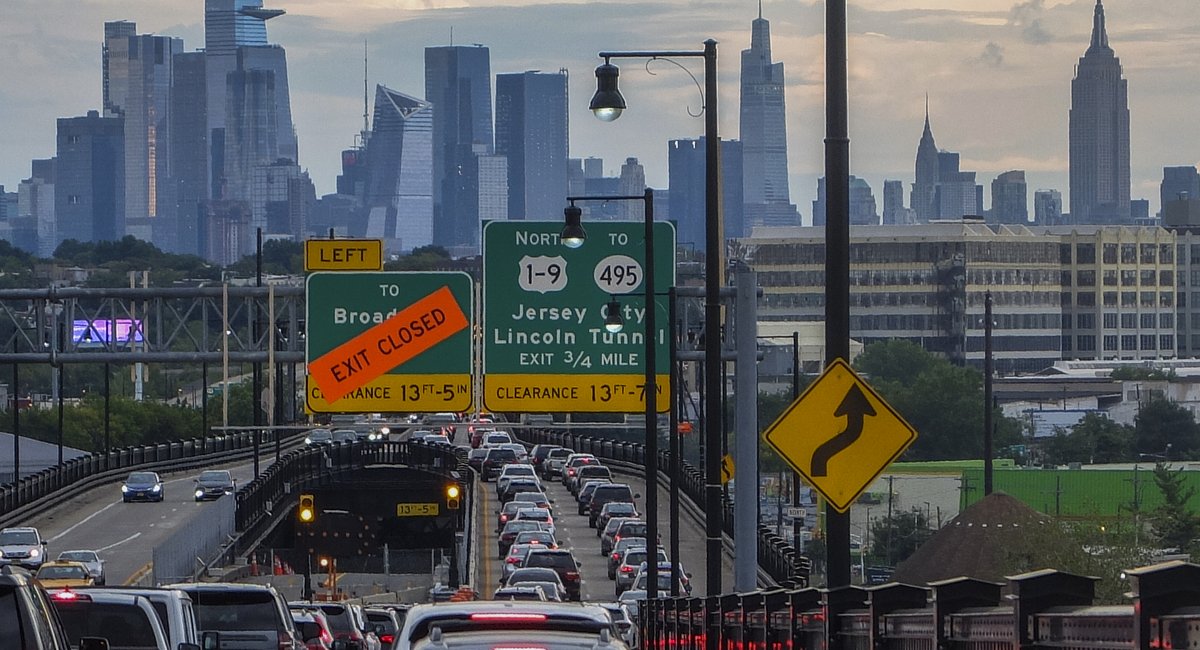This column originally appeared in On The Way, our transit newsletter covering everything you need to know about NYC transportation. Sign up to get the full version in your inbox every Thursday.
The congestion pricing plan approved by the MTA board this week may require 60 days of public review, but New Yorkers shouldn’t expect any major tweaks or changes to the scheme.
Altering the $15 daytime price for drivers who enter Manhattan below 60th Street — or adding more exemptions for drivers — would be like taking a block out of a Jenga puzzle, MTA Chair Janno Lieber said Wednesday, borrowing language from this transit reporter.
“If you change one aspect … the whole thing starts to unravel or fall apart,” said Lieber. “It’s definitely a really complex calculus if you change anything.”
His comment flies in the face of remarks last week from Mayor Eric Adams, who claimed the plan approved by an advisory panel is “the start of the conversation.”
This is all to say, the congestion pricing structure – the $15 base fee, a 75% discount on overnight tolls, and a $5 credit to drivers who cross a tunnel into the tolling zone — is close to fully baked. Any major changes could throw the whole plan out of whack.
That’s because the tolls are required by law to bring in $1 billion a year. Like the bygone flap of a butterfly wing, one small change could have huge consequences.
Lieber said major adjustments to the pricing structure could trigger a “doomsday scenario” that could send the plan back to the Federal Highway Administration for months of review. Still, the MTA is required to hold another round of public hearings about the new tolls and at least entertain the concerns of the public.
“In an ideal world, you wouldn’t mess with [it] too much,” Lieber said. “That said, we are taking the public comment process very seriously.”
While major changes to the toll structure are unlikely, it appeared at the MTA board meeting that officials were taking one of Adams’ gripes about congestion pricing seriously. A recommendation by the advisory panel to toll school buses is already being reconsidered, Lieber said.
He said the MTA doesn’t want to toll buses transporting children. But those same school buses are sometimes repurposed as party buses at night, so the agency isn’t sure yet how to distinguish between the two uses.
Looming over the landmark vote by the MTA board is a pair of lawsuits filed by New Jersey lawmakers. Gov. Phil Murphy and Fort Lee Mayor Mark Sokolich are both fighting to stop the program in federal court. The judge overseeing those cases has the authority to delay or even kill the current congestion pricing plan.
State lawmakers initially planned for congestion pricing to launch more than two years ago — and the delays since have already forced the agency to freeze a planned upgrade to the outdated signal equipment on the A and C subway lines in Brooklyn. Further delays could cause other projects to be pushed back.
Curious Commuter
Question:
“Why do I have to pay to ride the JFK AirTrain to the subway, but not the airport’s parking lots or car rental stations?”
– Tim, from Park Slope
Answer:
Most AirTrain riders gripe about its $8.25 fare (which is slated to go up to $8.50 next year). But Tim raises an interesting point: Why tax transit riders while giving drivers a free pass? Port Authority officials tell me they’ve no choice but to provide free circulation within the airport via the AirTrain, and say the high cost for a connection to the subway or LIRR subsidizes the toot scoot’s $77.3 million annual operating cost. The Port’s people also say the AirTrain riders from the parking lots already pay a fee. But, as Tim writes in an email, the price nonetheless “feels like a total ripoff.”
Have a question? @Gothamist’s Instagram gives followers for special opportunities and prompts to submit questions.
You can also email cguse@wnyc.org or snessen@wnyc.org with the subject line “Curious Commuter question.”
This week in transit history: MTA unveils plans for the V train
During the first week of December 2000, the MTA announced plans for the V train. A year later, it would start running from Second Avenue on the Lower East Side, up Sixth Avenue, across the East River at 53rd Street and out to Forest Hills. After decades of delays, the MTA finally connected the subway tracks from the 63rd Street East River tunnel to the subway line beneath Queens Boulevard. The MTA would run the F line along the new connection, giving it space to launch the V. The new line also upset G train riders, as service on the line ended at Court Square upon the launch of the V. The G used to run to Forest Hills. The experiment was short-lived. In 2010, the MTA killed service on the V amid a funding shortfall during the Great Recession, replacing it with the M line along its route in Manhattan and Queens.

Leave a Reply